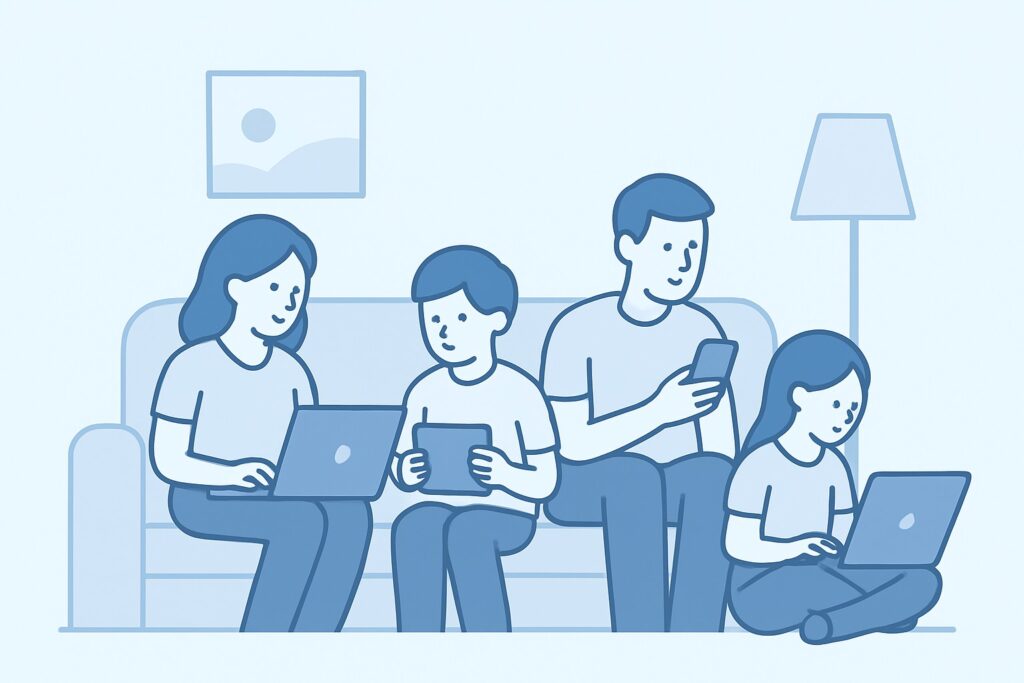One of the most common questions we hear is: How much bandwidth do I actually need? The answer depends on a few key factors: the types of online activities you do most often, how many people (and devices) are connected, and whether those devices are using the internet all at once. Let’s break it down:
Streaming TV and Movies
Video streaming is the single biggest bandwidth consumer in most homes.• Standard Definition (SD): 1–2 Mbps per stream• High Definition (HD): 5 Mbps per stream• 4K Ultra HD: 15–25 Mbps per stream
So, if a family of four is each watching their own HD show, that’s roughly 20 Mbps of demand. If anyone is streaming in 4K, the bandwidth need climbs higher.
Online Gaming
Many people are surprised to learn that online gaming itself doesn’t require much bandwidth, typically only 1–3 Mbps while playing.However, downloading new games or updates can require a lot more, which temporarily spikes usage.It’s important to note, for everyday play, latency (low lag) is more important than raw speed.
Video Calls and Remote Work
With more people working or learning from home, video conferencing can be a major factor.• Zoom/Teams call in HD: 3 Mbps• Group video call in HD: 4–6 Mbps per person
If you have two people working from home and kids joining online classes, that can add up fast.
Social Media, Browsing, and Music
These activities don’t use much bandwidth individually:• Web browsing/social media: 1 Mbps• Music streaming (Spotify, Apple Music, etc.): 0.5–1 Mbps
But because they’re “always on” in the background, they add to the overall household load.
How Many People Live in Your House?
The number of people (and devices) connected at the same time makes the biggest difference.• Single user: 25 Mbps is usually plenty for light streaming, browsing, and calls.• Couple or roommates: 50–100 Mbps covers two streams + work calls without hiccups.• Family of four: 100-200 Mbps handles multiple 4K streams, gaming, and work calls simultaneously.• Large household (5+ people or heavy users): 200 Mbps+ ensures no one slows down during peak use.
Final Thoughts
After determining what activities you use the internet for and how many people one plan will cover, it’s important to shop around for an internet service provider that doesn’t have data caps, has low latency, and manages their network. At Unwired LTD, our service plans were built with people’s growing internet needs in mind. Our local service has extremely low latency, preventing lag times, and we do not oversubscribe our networks, meaning you won’t experience any slow downs during peak hours.
If you’re local to the Bay Area and are looking for a trustworthy ISP, contact us today!

 (510) 868-1614
(510) 868-1614
Pingback: How to Test Your Internet Speed (and What the Results Actually Mean) – Unwired LTD